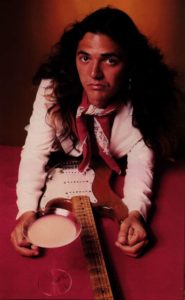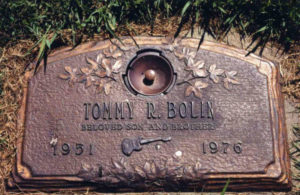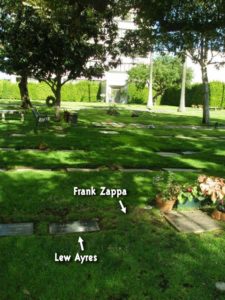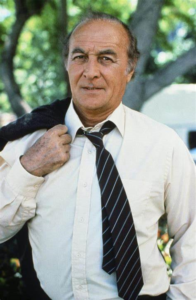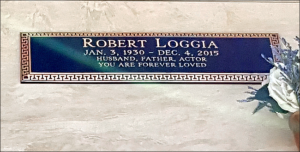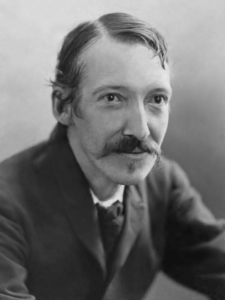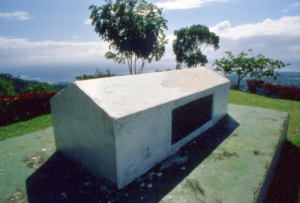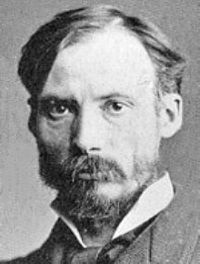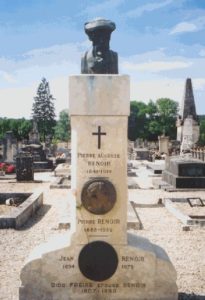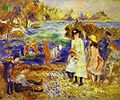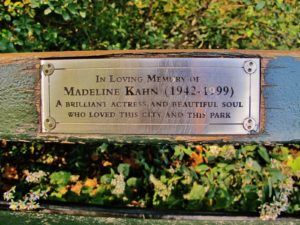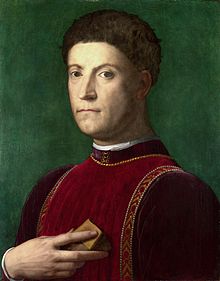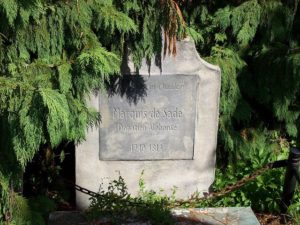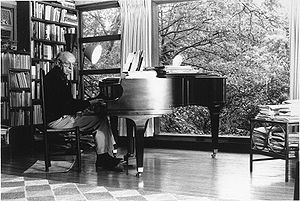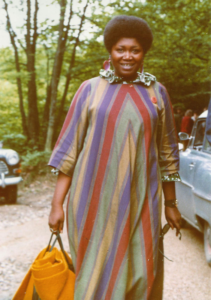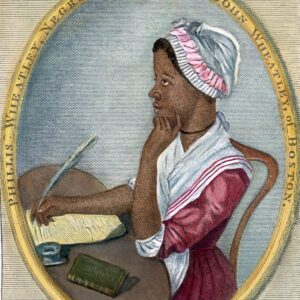 On this day in 1784, author considered the first African-American author of a published book of poetry, Phillis Wheatley Peters, died at the approximate age of 31 in Boston. Born in West Africa c. 1753, she was kidnapped and subsequently sold into enslavement at the age of seven or eight and transported to North America, where she was bought by the Wheatley family of Boston. After she learned to read and write, they encouraged her poetry when they saw her talent.
On this day in 1784, author considered the first African-American author of a published book of poetry, Phillis Wheatley Peters, died at the approximate age of 31 in Boston. Born in West Africa c. 1753, she was kidnapped and subsequently sold into enslavement at the age of seven or eight and transported to North America, where she was bought by the Wheatley family of Boston. After she learned to read and write, they encouraged her poetry when they saw her talent.
On a 1773 trip to London with her enslaver’s son, seeking publication of her work, Wheatley met prominent people who became patrons. The publication in London of her Poems on Various Subjects, Religious and Moral on September 1, 1773, brought her fame both in England and the American colonies. Figures such as George Washington praised her work. A few years later, African-American poet Jupiter Hammon praised her work in a poem of his own.
Wheatley was emancipated by her enslavers shortly after the publication of her book. They soon died, and she married John Peters, a poor grocer. They lost three children, who died young.
The Final Footprint
Copp’s Hill Burying Ground, Boston.
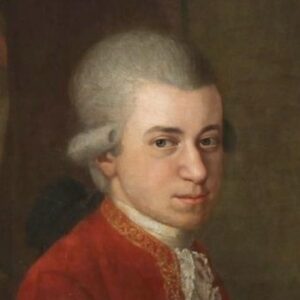 On this day in 1791, in my opinion, the greatest, most prolific and influential composer of classical music, Wolfgang Amadeus Mozart, died in Vienna at the age of 35. His baptismal name was Johannes Chrysostomus Wolfgangus Theophilus Mozart. Born 27 January 1756 at 9 Getreidegasse in Salzburg, capital of the sovereign Archbishopric of Salzburg, in what is now Austria but at the time was part of the Bavarian Circle in the Holy Roman Empire. Of course my favorite works by Mozart are his operas particularly; Le nozze di Figaro (1786) (The Marriage of Figaro), Don Giovanni (1787), Cosi fan tutte (1790) (Women are like that) and Die Zauberflöte (1791) (The Magic Flute). Mozart married Constanze Weber on 4 August 1782. Mozart met fellow composer Joseph Haydn in Vienna and the two became friends. Haydn Told Mozart’s father; “I tell you before God, and as an honest man, your son is the greatest composer known to me by person and repute, he has taste and what is more the greatest skill in composition.” and “posterity will not see such a talent again in 100 years”. Bravo Mozart!
On this day in 1791, in my opinion, the greatest, most prolific and influential composer of classical music, Wolfgang Amadeus Mozart, died in Vienna at the age of 35. His baptismal name was Johannes Chrysostomus Wolfgangus Theophilus Mozart. Born 27 January 1756 at 9 Getreidegasse in Salzburg, capital of the sovereign Archbishopric of Salzburg, in what is now Austria but at the time was part of the Bavarian Circle in the Holy Roman Empire. Of course my favorite works by Mozart are his operas particularly; Le nozze di Figaro (1786) (The Marriage of Figaro), Don Giovanni (1787), Cosi fan tutte (1790) (Women are like that) and Die Zauberflöte (1791) (The Magic Flute). Mozart married Constanze Weber on 4 August 1782. Mozart met fellow composer Joseph Haydn in Vienna and the two became friends. Haydn Told Mozart’s father; “I tell you before God, and as an honest man, your son is the greatest composer known to me by person and repute, he has taste and what is more the greatest skill in composition.” and “posterity will not see such a talent again in 100 years”. Bravo Mozart!
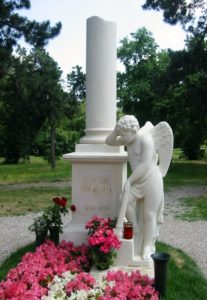
Mozart’s memorial at Sankt Marxer Friedhof
The Final Footprint – In accordance with contemporary Viennese custom, Mozart was buried in a common unmarked grave at the Sankt Marxer Friedhof (St. Marx cemetery) outside of Vienna. In 1855, 64 years after his death, a gravestone was erected at what was presumed to be the correct spot. Later the stone was transferred to the group of famous musician graves at Zentralfriedhof, the largest and most famous cemetery among Vienna’s nearly 50 cemeteries. A cemetery worker replaced it with a memorial tablet, which was again expanded by several contributors. Other notable Final Footprints at Zentralfriedhof include; Ludwig van Beethoven, Johannes Brahms, Antonio Salieri, Franz Schubert, Johann Strauss I, and Johann Strauss II. Amadeus a 1984 drama biopic film directed by Miloš Forman and written by Peter Shaffer, adapted from Shaffer’s stage play Amadeus, is based loosely on the lives of Mozart and Salieri. The movie features F. Murray Abraham as Salieri and Tom Hulce as Mozart. Amadeus was nominated for 53 awards and received 40, including eight Academy Awards (including Best Picture), four BAFTA Awards, four Golden Globes, and a DGA Award. In 1998, the American Film Institute ranked Amadeus 53rd on its 100 Years… 100 Movies list. One of my very favorite movies. Perhaps the best line from the movie, by Salieri: “This was no composition by a performing monkey! This was a music I’d never heard. Filled with such longing, such unfulfillable longing, it had me trembling. It seemed to me that I was hearing the very voice of God.”
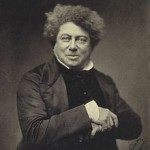 On this day in 1870, writer Alexandre Dumas, died at the age of 68 in Puys (near Dieppe), Seine-Maritime, France. Born Dumas Davy de la Pailleteriein Villers-Cotterêts in the department of Aisne, in Picardy, France. Perhaps best known for his historical novels of high adventure. Translated into nearly 100 languages, these have made him one of the most widely read French authors in history. His novels include; The Nutcracker (Histoire d’un casse-noisette, 1844) (a revision of E. T. A. Hoffmann‘s story The Nutcracker and the Mouse King, later set by composer Pyotr Ilyich Tchaikovsky to music for a ballet), The Three Musketeers (Les Trois Mousquetaires, 1844), and The Count of Monte Cristo (Le Comte de Monte-Cristo, 1845–1846). His novels have been adapted since the early twentieth century for nearly 200 films. Dumas’ last novel, The Knight of Sainte-Hermine, unfinished at his death, was completed by scholar Claude Schopp and published in 2005, becoming a bestseller. It was published in English in 2008 as The Last Cavalier. Dumas married the actress Ida Ferrier (born Marguerite-Joséphine Ferrand, but had numerous affairs, said to total 40. He was known to have at least four illegitimate or “natural” children, including a boy who became a successful novelist and playwright, and was known as Alexandre Dumas, fils (son). Among his affairs, in 1866 Dumas had one with Adah Isaacs Menken, an American actress then at the height of her career and less than half his age.
On this day in 1870, writer Alexandre Dumas, died at the age of 68 in Puys (near Dieppe), Seine-Maritime, France. Born Dumas Davy de la Pailleteriein Villers-Cotterêts in the department of Aisne, in Picardy, France. Perhaps best known for his historical novels of high adventure. Translated into nearly 100 languages, these have made him one of the most widely read French authors in history. His novels include; The Nutcracker (Histoire d’un casse-noisette, 1844) (a revision of E. T. A. Hoffmann‘s story The Nutcracker and the Mouse King, later set by composer Pyotr Ilyich Tchaikovsky to music for a ballet), The Three Musketeers (Les Trois Mousquetaires, 1844), and The Count of Monte Cristo (Le Comte de Monte-Cristo, 1845–1846). His novels have been adapted since the early twentieth century for nearly 200 films. Dumas’ last novel, The Knight of Sainte-Hermine, unfinished at his death, was completed by scholar Claude Schopp and published in 2005, becoming a bestseller. It was published in English in 2008 as The Last Cavalier. Dumas married the actress Ida Ferrier (born Marguerite-Joséphine Ferrand, but had numerous affairs, said to total 40. He was known to have at least four illegitimate or “natural” children, including a boy who became a successful novelist and playwright, and was known as Alexandre Dumas, fils (son). Among his affairs, in 1866 Dumas had one with Adah Isaacs Menken, an American actress then at the height of her career and less than half his age.
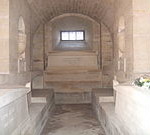 The Final Footprint – Dumas was cremated and his cremains were originally interred at his birthplace of Villers-Cotterêts in the department of Aisne. In 2002 for the bicentennial of Dumas’ birth, the French President, Jacques Chirac, had a ceremony honouring the author by having his cremains inurned at the mausoleum of the Panthéon of Paris, where many French luminaries were buried. The proceedings were televised: the new coffin was draped in a blue velvet cloth and carried on a caisson flanked by four mounted Republican Guards costumed as the four Musketeers. It was transported through Paris to the Panthéon. In his speech, President Chirac said:
The Final Footprint – Dumas was cremated and his cremains were originally interred at his birthplace of Villers-Cotterêts in the department of Aisne. In 2002 for the bicentennial of Dumas’ birth, the French President, Jacques Chirac, had a ceremony honouring the author by having his cremains inurned at the mausoleum of the Panthéon of Paris, where many French luminaries were buried. The proceedings were televised: the new coffin was draped in a blue velvet cloth and carried on a caisson flanked by four mounted Republican Guards costumed as the four Musketeers. It was transported through Paris to the Panthéon. In his speech, President Chirac said:
“With you, we were D’Artagnan, Monte Cristo, or Balsamo, riding along the roads of France, touring battlefields, visiting palaces and castles—with you, we dream.”
Other notable Final Footprints at the Panthéon include: Victor Hugo, Louis Braille, Pierre and Marie Curie, André Malraux, Jean-Jacques Rousseau, Voltaire, and Émile Zola.
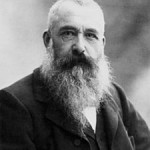 On this day in 1926, a founder of French Impressionist painting, Claude Monet died of lung cancer at the age of 86 in Giverny, France. Born Oscar-Claude Monet on 14 November 1840 on the 5th floor of 45 rue Laffitte, in the 9th arrondissement of Paris. In my opinion, Monet was the most consistent and prolific practitioner of the movement’s philosophy of expressing one’s perceptions before nature, especially as applied to plein-air landscape painting. The term Impressionism is derived from the title of his painting Impression, Sunrise (Impression, soleil levant). Monet’s Camille or The Woman in the Green Dress (La femme à la robe verte), painted in 1866, brought him recognition and was one of many works featuring his future wife, Camille Doncieux; she was the model for the figures in Women in the Garden of the following year, as well as for On the Bank of the Seine, Bennecourt, 1868. Camille became pregnant and gave birth to their first child, Jean in 1867. Monet and Camille married 28 June 1870. Camille became ill in 1876. They had a second son, Michel, on 17 March 1878. This second child weakened her already fading health. In that same year, Monet moved to the village of Vétheuil. On 5 September 1879, Camille died of tuberculosis at the age of thirty-two; Monet painted her on her death bed. Monet later explained that his need to analyse colours was both the joy and torment of his life. He reportedly said, “I one day found myself looking at my beloved wife’s dead face and just systematically noting the colours according to an automatic reflex!” Monet married again, Alice Hoschedé (1892 – 1911 her death).
On this day in 1926, a founder of French Impressionist painting, Claude Monet died of lung cancer at the age of 86 in Giverny, France. Born Oscar-Claude Monet on 14 November 1840 on the 5th floor of 45 rue Laffitte, in the 9th arrondissement of Paris. In my opinion, Monet was the most consistent and prolific practitioner of the movement’s philosophy of expressing one’s perceptions before nature, especially as applied to plein-air landscape painting. The term Impressionism is derived from the title of his painting Impression, Sunrise (Impression, soleil levant). Monet’s Camille or The Woman in the Green Dress (La femme à la robe verte), painted in 1866, brought him recognition and was one of many works featuring his future wife, Camille Doncieux; she was the model for the figures in Women in the Garden of the following year, as well as for On the Bank of the Seine, Bennecourt, 1868. Camille became pregnant and gave birth to their first child, Jean in 1867. Monet and Camille married 28 June 1870. Camille became ill in 1876. They had a second son, Michel, on 17 March 1878. This second child weakened her already fading health. In that same year, Monet moved to the village of Vétheuil. On 5 September 1879, Camille died of tuberculosis at the age of thirty-two; Monet painted her on her death bed. Monet later explained that his need to analyse colours was both the joy and torment of his life. He reportedly said, “I one day found myself looking at my beloved wife’s dead face and just systematically noting the colours according to an automatic reflex!” Monet married again, Alice Hoschedé (1892 – 1911 her death).
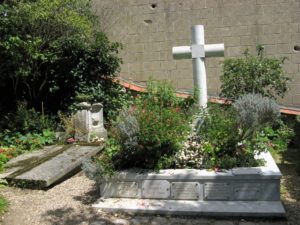 The Final Footprint – Monet is interred in the Giverny church cemetery. He had insisted that his funeral be simple. His long-time friend Georges Clemenceau removed the black cloth draped over the coffin, stating, “Pas de noir pour Monet!” and replaced it with a flower-patterned curtain. His home, garden and waterlily pond were bequeathed by his son Michel, his only heir, to the French Academy of Fine Arts (part of the Institut de France) in 1966. Through the Fondation Claude Monet, the house and gardens were opened for visits in 1980, following restoration. In addition to souvenirs of Monet and other objects of his life, the house contains his collection of Japanese woodcut prints. The house is one of the two main attractions of Giverny, which hosts tourists from all over the world.
The Final Footprint – Monet is interred in the Giverny church cemetery. He had insisted that his funeral be simple. His long-time friend Georges Clemenceau removed the black cloth draped over the coffin, stating, “Pas de noir pour Monet!” and replaced it with a flower-patterned curtain. His home, garden and waterlily pond were bequeathed by his son Michel, his only heir, to the French Academy of Fine Arts (part of the Institut de France) in 1966. Through the Fondation Claude Monet, the house and gardens were opened for visits in 1980, following restoration. In addition to souvenirs of Monet and other objects of his life, the house contains his collection of Japanese woodcut prints. The house is one of the two main attractions of Giverny, which hosts tourists from all over the world.
Gallery

 Le déjeuner sur l’herbe, (right section), with Gustave Courbet,
Le déjeuner sur l’herbe, (right section), with Gustave Courbet, 1865–1866, Musée d’Orsay, Paris

Woman with a Parasol, (Camille and Jean Monet), 1875, National Gallery of Art, Washington, DC.
-
View at Rouelles, Le Havre 1858, Private collection.
-
Mouth of the Seine, 1865, The Norton Simon Foundation, Pasadena, CA
-
The Woman in the Green Dress, Camille Doncieux, 1866, Kunsthalle Bremen.
-
Le déjeuner sur l’herbe, 1865–1866, The Pushkin Museum of Fine Arts, Moscow.
-
Flowering Garden at Sainte-Adresse, 1866, Musée d’Orsay, Paris.
-
Women in a Garden, 1866–1867, Musée d’Orsay, Paris.
-
Woman in a Garden, 1867, Hermitage, St. Petersburg
-
Jardin à Sainte-Adresse, 1867, Metropolitan Museum of Art, New York City.
-
The Luncheon, 1868, Städel Museum, Frankfurt
-
Pheasant, 1869. Private collection.
-
The Magpie, 1868–1869. Musée d’Orsay, Paris.
-
Seine Basin with Argenteuil, 1872, Musée d’Orsay, Paris.
-
Springtime (1872). The Walters Art Museum, Baltimore.
-
Jean Monet on his hobby horse, 1872, Metropolitan Museum of Art, New York City.
-
Camille Monet on a Garden Bench, 1873, Metropolitan Museum of Art, New York City.
-
The Artist’s house at Argenteuil, 1873, The Art Institute of Chicago
-
Poppies Blooming, 1873, Musée d’Orsay, Paris.
-
Train in the Snow, 1875, Musée Marmottan Monet, Paris.
-
Madame Monet in a Japanese Costume, 1875, Museum of Fine Arts, Boston
-
Camille Monet at her tapestry loom, 1875, Barnes Foundation, Merion, PA
-
Argenteuil, 1875, Musée de l’Orangerie, Paris.
-
The Boat Studio, 1876, Barnes Foundation, Merion, PA
-
Saint Lazare Train Station, Paris, 1877, The Art Institute of Chicago
-
Rue Montorgueil, 1878, Musée d’Orsay, Paris.
-
Vétheuil in the Fog, 1879, Musée Marmottan Monet, Paris.
-
Camille Monet on her deathbed, 1879, Musée d’Orsay, Paris.
-
Street in Vétheuil in Winter, 1879, Gothenburg Museum of Art
-
Lavacourt: Sunshine and Snow, 1879–1880 National Gallery, London.
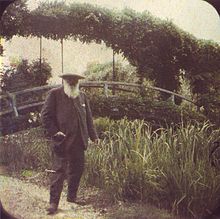
 Monet, in his garden
Monet, in his garden, by Étienne Clémentel, c. 1917

Monet, right, in his garden at Giverny, 1922

Port-Goulphar, Belle Île, 1887, Art Gallery of New South Wales
-
The Artist’s Garden at Vétheuil, 1880, National Gallery of Art
-
The Lindens of Poissy, 1882
-
La maison du pêcheur à Varengeville (The Fisherman’s house at Varengeville), 1882, Museum Boymans-van Beuningen, Rotterdam
-
Rock Arch West of Étretat (The Manneport), 1883, Metropolitan Museum of Art, New York
-
The Cliffs at Etretat, 1885, Clark Art Institute, Williamstown, Massachusetts
-
Still-Life with Anemones, 1885
-
Bordighera, 1884, The Art Institute of Chicago, Illinois
-
Study of a Figure Outdoors: Woman with a Parasol, facing left, 1886. The pictured woman is Suzanne Hoschedé (c. 1864–1899), eldest daughter of Alice Hoschedé, second wife of Monet, Musée d’Orsay.
-
The Port Coton Pyramids, 1886
-
Oat and Poppy Field, Giverny, 1890
-
Haystacks, (sunset), 1890–1891, Museum of Fine Arts, Boston
-
Poplars, (autumn), 1891, Philadelphia Museum of Art
-
Four Poplars on the Banks of the Epte River near Giverny, 1891, Metropolitan Museum of Art
-
Rouen Cathedral, Façade (sunset), 1892–1894, Musée Marmottan Monet, Paris
-
The Seine at Giverny, 1897, National Gallery of Art
-
Charing Cross Bridge, 1899, Collection Carmen Thyssen-Bornemisza, Thyssen-Bornemisza Museum, Madrid
-
Bridge over a Pond of Water Lilies, 1899, Metropolitan Museum of Art
-
Poplars on the Epte, 1900, National Gallery of Scotland, Edinburgh
-
The Garden in Flower, 1900
-
Garden Path, 1902, Österreichische Galerie Belvedere
-
Houses of Parliament, London, c. 1904, Musée Marmottan Monet, Paris
-
Water Lilies, 1906, Art Institute of Chicago
-
Water Lilies, 1907, Bridgestone Museum of Art, Tokyo
-
Palace From Mula, Venice, 1908, National Gallery of Art, Washington, D.C.
-
The Grand Canal, Venice 1908, Boston Museum of Fine Arts
-
Water Lilies, 1914–1917, Toledo Museum of Art, Toledo, Ohio
-
Nympheas, 1915, Neue Pinakothek, Munich
-
Nympheas, 1915, Musée Marmottan Monet
-
White and yellow Water Lilies, (1915–1917), Kunstmuseum Winterthur, Winterthur, Switzerland
-
Nympheas, c. 1916, Musée Marmottan Monet, Paris
-
Water Lilies, 1916, The National Museum of Western Art, Tokyo
-
Water Lilies and Reflections of a Willow (1916–19), Musée Marmottan Monet
-
Water-Lily Pond and Weeping Willow, 1916–1919
-
Water Lilies, 1917–1919, Honolulu Museum of Art
-
Weeping Willow, 1918–1919
-
Weeping Willow, 1918–1919, Kimball Art Museum, Fort Worth
-
Water Lilies, 1919, Metropolitan Museum of Art, New York City
-
Sea-Roses (Yellow Nirwana), 1920, The National Gallery, London
-
Water-Lily Pond, c. 1915–1926, Chichu Art Museum, Naoshima, Kagawa, Japan
-
The Rose-Way in Giverny, 1920–1922, Musée Marmottan Monet
#RIP #OTD in 2008 actress (An American in Paris, Executive Suite, The Ten Commandments, Spartacus), acting instructor Nina Foch died from the blood disorder myelodysplasia at the Ronald Reagan UCLA Medical Center, Los Angeles, aged 84. Cremation
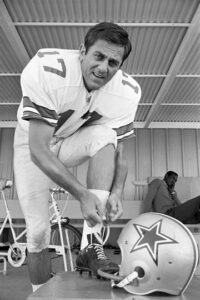 On this day in 2010 Dallas Cowboys quarterback, Monday Night Football sports commentator, actor, Dandy Don, Don Meredith died at St. Vincent Regional Medical Center in Santa Fe, New Mexico, after suffering a brain hemorrhage, aged 72. Born Joseph Don Meredith on 10 April 1938 in Mount Vernon, Texas.
On this day in 2010 Dallas Cowboys quarterback, Monday Night Football sports commentator, actor, Dandy Don, Don Meredith died at St. Vincent Regional Medical Center in Santa Fe, New Mexico, after suffering a brain hemorrhage, aged 72. Born Joseph Don Meredith on 10 April 1938 in Mount Vernon, Texas.
He spent all nine seasons of his professional playing career (1960–1968) with the Cowboys. He was named to the Pro Bowl in each of his last three years as a player. He subsequently became a color analyst for NFL telecasts from 1970 to 1984. As an original member of the Monday Night Football broadcast team, he famously played the role of Howard Cosell’s comic foil. Meredith was also an actor who appeared in a dozen films and seven major television shows, some of which had him as the main starring actor. He is probably familiar to television audiences as Bert Jameson, a recurring role he had in Police Story.
The Final Footprint
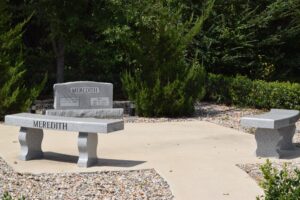
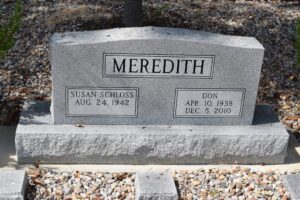
Mount Vernon City Cemetery.
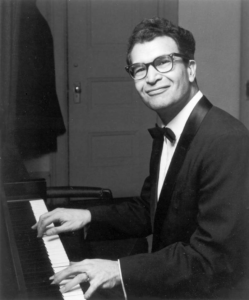 On this day in 2012, jazz pianist and composer Dave Brubeck died of heart failure in Norwalk, Connecticut, at the age of 91. Born David Warren Brubeck on December 6, 1920 in Concord, California. In my opinion, he is one of the foremost exponents of cool jazz. Many of his compositions have become jazz standards including “In Your Own Sweet Way” and “The Duke”. Brubeck’s style ranged from refined to bombastic, reflecting both his mother’s classical training and his own improvisational skills. His music is known for employing unusual time signatures as well as superimposing contrasting rhythms, meters, and tonalities.
On this day in 2012, jazz pianist and composer Dave Brubeck died of heart failure in Norwalk, Connecticut, at the age of 91. Born David Warren Brubeck on December 6, 1920 in Concord, California. In my opinion, he is one of the foremost exponents of cool jazz. Many of his compositions have become jazz standards including “In Your Own Sweet Way” and “The Duke”. Brubeck’s style ranged from refined to bombastic, reflecting both his mother’s classical training and his own improvisational skills. His music is known for employing unusual time signatures as well as superimposing contrasting rhythms, meters, and tonalities.
Brubeck experimented with time signatures throughout his career, recording “Pick Up Sticks” in 64, “Unsquare Dance” in 74, “World’s Fair” in 134, and “Blue Rondo à la Turk” in 98. He was also a composer of orchestral and sacred music and wrote soundtracks for television, such as Mr. Broadway and the animated miniseries This Is America, Charlie Brown.
Often incorrectly attributed to Brubeck, the song “Take Five”, which has become a jazz standard, was composed by Brubeck’s long-time musical partner, alto saxophonist Paul Desmond.[1] Appearing on one of the top-selling jazz albums, Time Out, and written in 54 time, “Take Five” has endured as a jazz classic associated with Brubeck.
Brubeck married jazz lyricist Iola Whitlock in September 1942; the couple was married for 70 years, until his death in 2012. Iola died on March 12, 2014, from cancer in Wilton, Connecticut, at the age of 90.
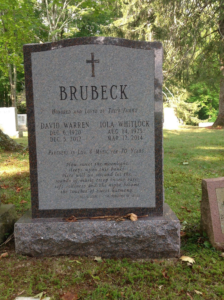 The Final Footprint
The Final Footprint
Brubeck died one day before his 92nd birthday. A birthday party concert had been planned for him with family and famous guests. A memorial tribute was held in May 2013.
The Concord Boulevard Park in his hometown of Concord, California, was renamed to “Dave Brubeck Memorial Park” in his honor.
While on tour performing “Hot House” in Toronto, Chick Corea and Gary Burton completed a tribute to Brubeck on the day of his death. Corea played “Strange Meadow Lark”, from Brubeck’s album Time Out.
Brubeck is interred at Umpawaug Cemetery in Redding, Connecticut.
In the United States, May 4 is informally observed as “Dave Brubeck Day”. In the format most commonly used in the U.S., May 4 is written “5/4”, recalling the time signature of “Take Five”. In September 2019, musicologist Stephen A. Crist’s book, Dave Brubeck’s Time Out, provided the first scholarly book length analysis of the album.
A new biography of Dave Brubeck, by the British writer Philip Clark, was published by Da Capo Press in the US and Headline Publishing Group in the UK on February 18, 2020.
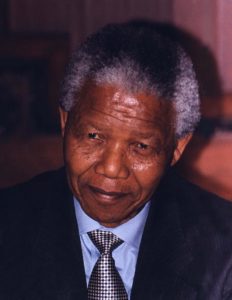 On this day in 2013, anti-apartheid revolutionary, political leader, and philanthropist Nelson Mandela died at his home in Houghton, surrounded by his family, at the age of 95. Born Nelson Rolihlahla Mandela on 18 July 1918 in Mvezo, British South Africa. Mandela served as President of South Africa from 1994 to 1999. He was the country’s first black head of state and the first elected in a fully representative democratic election. His government focused on dismantling the legacy of apartheid by tackling institutionalised racism and fostering racial reconciliation. Ideologically an African nationalist and socialist, he served as President of the African National Congress (ANC) party from 1991 to 1997.
On this day in 2013, anti-apartheid revolutionary, political leader, and philanthropist Nelson Mandela died at his home in Houghton, surrounded by his family, at the age of 95. Born Nelson Rolihlahla Mandela on 18 July 1918 in Mvezo, British South Africa. Mandela served as President of South Africa from 1994 to 1999. He was the country’s first black head of state and the first elected in a fully representative democratic election. His government focused on dismantling the legacy of apartheid by tackling institutionalised racism and fostering racial reconciliation. Ideologically an African nationalist and socialist, he served as President of the African National Congress (ANC) party from 1991 to 1997.
A Xhosa, Mandela was born to the Thembu royal family. He studied law at the University of Fort Hare and the University of Witwatersrand before working as a lawyer in Johannesburg. There he became involved in anti-colonial and African nationalist politics, joining the ANC in 1943 and co-founding its Youth League in 1944. After the National Party’s white-only government established apartheid, a system of racial segregation that privileged whites, he and the ANC committed themselves to its overthrow. Mandela was appointed President of the ANC’s Transvaal branch, rising to prominence for his involvement in the 1952 Defiance Campaign and the 1955 Congress of the People. He was repeatedly arrested for seditious activities and was unsuccessfully prosecuted in the 1956 Treason Trial. Influenced by Marxism, he secretly joined the banned South African Communist Party (SACP). Although initially committed to non-violent protest, in association with the SACP he co-founded the militant Umkhonto we Sizwe in 1961 and led a sabotage campaign against the government. He was arrested and imprisoned in 1962, and subsequently sentenced to life imprisonment for conspiring to overthrow the state following the Rivonia Trial.
Mandela served 27 years in prison, split between Robben Island, Pollsmoor Prison, and Victor Verster Prison. Amid growing domestic and international pressure, and with fears of a racial civil war, President F. W. de Klerk released him in 1990. Mandela and de Klerk led efforts to negotiate an end to apartheid, which resulted in the 1994 multiracial general election in which Mandela led the ANC to victory and became president. Leading a broad coalition government which promulgated a new constitution, Mandela emphasised reconciliation between the country’s racial groups and created the Truth and Reconciliation Commission to investigate past human rights abuses. Economically, Mandela’s administration retained its predecessor’s liberal framework despite his own socialist beliefs, also introducing measures to encourage land reform, combat poverty, and expand healthcare services. Internationally, he acted as mediator in the Pan Am Flight 103 bombing trial and served as Secretary-General of the Non-Aligned Movement from 1998 to 1999. He declined a second presidential term, and in 1999 was succeeded by his deputy, Thabo Mbeki. Mandela became an elder statesman and focused on combating poverty and HIV/AIDS through the charitable Nelson Mandela Foundation.
Mandela was a controversial figure for much of his life. Although critics on the right denounced him as a communist terrorist and those on the far-left deemed him too eager to negotiate and reconcile with apartheid’s supporters, he gained international acclaim for his activism. Widely regarded as an icon of democracy and social justice, he received more than 250 honours—including the Nobel Peace Prize—and became the subject of a cult of personality. He is held in deep respect within South Africa, where he is often referred to by his Xhosa clan name, Madiba, and described as the “Father of the Nation”.
His first marriage was to Evelyn Ntoko Mase in October 1944; they divorced in March 1958. Mandela’s second wife was the social worker Winnie Madikizela-Mandela, whom he married in June 1958. They divorced in March 1996. Mandela married his third wife, Graça Machel, on his 80th birthday in July 1998.
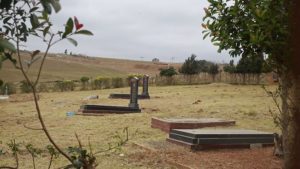 The Final Footprint
The Final Footprint
His death was publicly announced on television. Ten days of national mourning were proclained, and a memorial service was held at Johannesburg’s FNB Stadium on 10 December 2013. A national day of prayer and reflection was declared on 8 December. Mandela’s body lay in state from 11 to 13 December at the Union Buildings in Pretoria and a state funeral was held on 15 December in Qunu where he was interred in the Mandela Graveyard.
Have you planned yours yet?
Follow TFF on twitter @RIPTFF
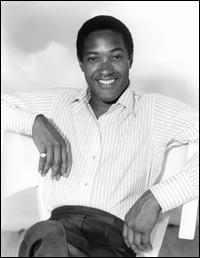 On this day in 1964, gospel, R&B, soul, and pop singer, songwriter, entrepreneur, a pioneer and founder of soul music, The King of Soul, Sam Cooke, died at the Hacienda Motel at 9137 South Figueroa Street in Los Angeles, California at the age of 33, from a gunshot wound to the torso. The motel’s manager said that she shot Cooke in self-defense after he broke into her office residence and attacked her. However, the details of the case involving Cooke’s death are still in dispute. Born Samuel Cook on 22 January 1931 in Clarksdale, Mississippi. In my opinion, his contribution in pioneering Soul music helped pave the way for others. He had 30 U.S. top 40 hits between 1957 and 1964, plus three more posthumously. Cooke was also among the first modern black performers and composers to attend to the business side of his musical career. He founded both a record label and a publishing company as an extension of his careers as a singer and composer. He also took an active part in the Civil Rights Movement. My favorite songs of his are “You Send Me”, “A Change Is Gonna Come”, “Chain Gang”, “Wonderful World”, and “Bring It on Home to Me”.
On this day in 1964, gospel, R&B, soul, and pop singer, songwriter, entrepreneur, a pioneer and founder of soul music, The King of Soul, Sam Cooke, died at the Hacienda Motel at 9137 South Figueroa Street in Los Angeles, California at the age of 33, from a gunshot wound to the torso. The motel’s manager said that she shot Cooke in self-defense after he broke into her office residence and attacked her. However, the details of the case involving Cooke’s death are still in dispute. Born Samuel Cook on 22 January 1931 in Clarksdale, Mississippi. In my opinion, his contribution in pioneering Soul music helped pave the way for others. He had 30 U.S. top 40 hits between 1957 and 1964, plus three more posthumously. Cooke was also among the first modern black performers and composers to attend to the business side of his musical career. He founded both a record label and a publishing company as an extension of his careers as a singer and composer. He also took an active part in the Civil Rights Movement. My favorite songs of his are “You Send Me”, “A Change Is Gonna Come”, “Chain Gang”, “Wonderful World”, and “Bring It on Home to Me”.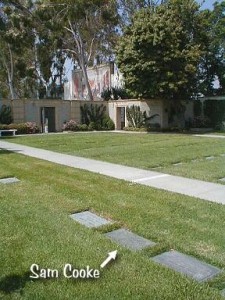 The Final Footprint – Cooke’s funeral was held in Chicago at A.R. Leak Funeral Home, where thousands of fans had lined up for over four city blocks to view his body. Cooke is interred in Forest Lawn Memorial Park, Glendale, California. His grave is marked with a bronze individual marker with his name, year of birth and death, the phrase “I LOVE YOU” and the inscription “UNTIL THE DAY BREAK, AND THE SHADOWS FLEE AWAY”. Other notable Final Footprints at Forest Lawn Glendale include; L. Frank Baum, Humphrey Bogart, Lon Chaney, Nat King Cole, Dorothy Dandridge, Sammy Davis, Jr., Walt Disney, Errol Flynn, Clark Gable, Jean Harlow, Michael Jackson, Carole Lombard, Tom Mix, Casey Stengel, Jimmy Stewart, Elizabeth Taylor, and Spencer Tracy.
The Final Footprint – Cooke’s funeral was held in Chicago at A.R. Leak Funeral Home, where thousands of fans had lined up for over four city blocks to view his body. Cooke is interred in Forest Lawn Memorial Park, Glendale, California. His grave is marked with a bronze individual marker with his name, year of birth and death, the phrase “I LOVE YOU” and the inscription “UNTIL THE DAY BREAK, AND THE SHADOWS FLEE AWAY”. Other notable Final Footprints at Forest Lawn Glendale include; L. Frank Baum, Humphrey Bogart, Lon Chaney, Nat King Cole, Dorothy Dandridge, Sammy Davis, Jr., Walt Disney, Errol Flynn, Clark Gable, Jean Harlow, Michael Jackson, Carole Lombard, Tom Mix, Casey Stengel, Jimmy Stewart, Elizabeth Taylor, and Spencer Tracy.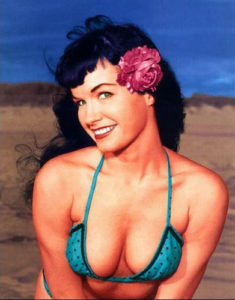 On this day in 2008, model, the Queen of Pinups, Bettie Page died in Los Angeles at the age of 85. Born Bettie Mae Page on April 22, 1923 in Nashville. She gained a significant profile in the 1950s for her pin-up photos. Her jet-black hair, blue eyes, and trademark fringe outfits have influenced artists for generations.
On this day in 2008, model, the Queen of Pinups, Bettie Page died in Los Angeles at the age of 85. Born Bettie Mae Page on April 22, 1923 in Nashville. She gained a significant profile in the 1950s for her pin-up photos. Her jet-black hair, blue eyes, and trademark fringe outfits have influenced artists for generations.
 On this day in 2021 author of gothic fiction and erotic literature, Anne Rice died from complications of a stroke at a hospital in Rancho Mirage, California, aged 80. Born in New Orleans on 4 October 1941.
On this day in 2021 author of gothic fiction and erotic literature, Anne Rice died from complications of a stroke at a hospital in Rancho Mirage, California, aged 80. Born in New Orleans on 4 October 1941.
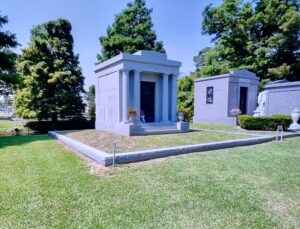
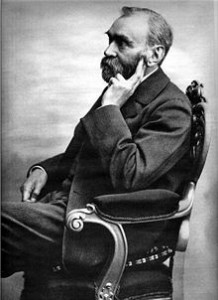
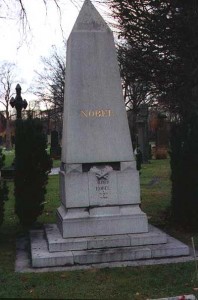
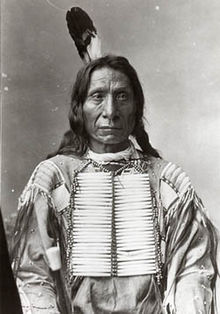
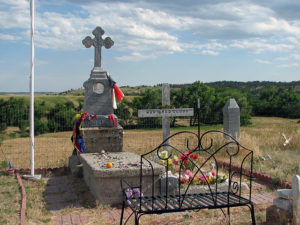
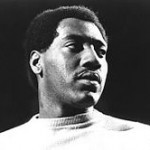
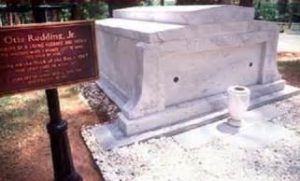
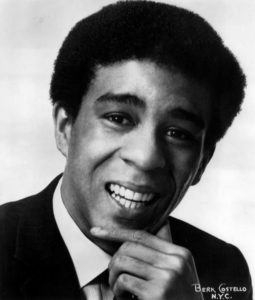

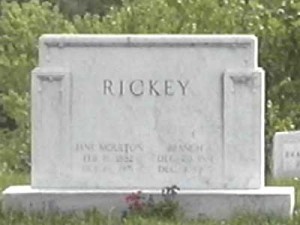
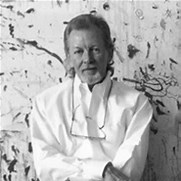
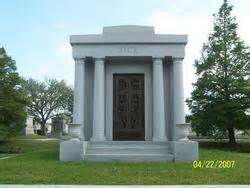
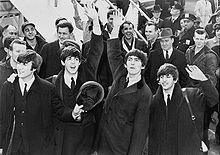 On this day in 1980, Grammy award-winning musician and singer-songwriter John Lennon, was shot to death in front of his apartment The Dakota in New York City, at the age of 40. Born John Winston Lennon on 9 October 1940 in Liverpool, England. Founding member along with Paul McCartney of The Beatles. The Lennon/McCartney songwriting partnership is widely regarded as one of the most influential and successful in music history. Lennon was married twice; Cynthia Powell (1962 – 1968 divorce) and Yoko Ono (1969 – 1980 his death). I learned of his death, as did many others, while watching Monday Night Football when Howard Cosell made the live announcement. The game was between the Miami Dolphins and the New England Patriots. Word had been passed to Cosell and Frank Gifford by Roone Arledge, who was president of ABC’s news and sports divisions at the time, near the end of the game and Cosell’s announcement was prefaced by Gifford saying, “And I don’t care what’s on the line, Howard, you have got to say what we know in the booth.” Cosell then announced:
On this day in 1980, Grammy award-winning musician and singer-songwriter John Lennon, was shot to death in front of his apartment The Dakota in New York City, at the age of 40. Born John Winston Lennon on 9 October 1940 in Liverpool, England. Founding member along with Paul McCartney of The Beatles. The Lennon/McCartney songwriting partnership is widely regarded as one of the most influential and successful in music history. Lennon was married twice; Cynthia Powell (1962 – 1968 divorce) and Yoko Ono (1969 – 1980 his death). I learned of his death, as did many others, while watching Monday Night Football when Howard Cosell made the live announcement. The game was between the Miami Dolphins and the New England Patriots. Word had been passed to Cosell and Frank Gifford by Roone Arledge, who was president of ABC’s news and sports divisions at the time, near the end of the game and Cosell’s announcement was prefaced by Gifford saying, “And I don’t care what’s on the line, Howard, you have got to say what we know in the booth.” Cosell then announced:
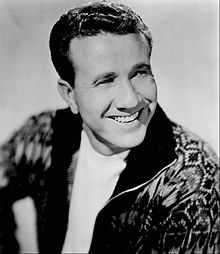

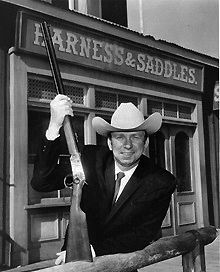


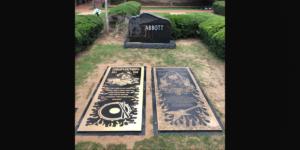
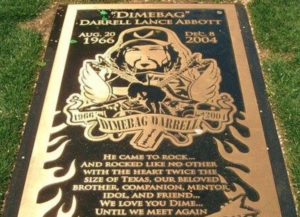
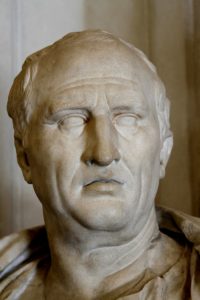

 The Final Footprint – The USS Arizona Memorial marks the resting place of 1,102 of the 1,177 sailors killed on the USS Arizona during the Attack on Pearl Harbor and commemorates the events of that day. Elvis staged a benefit concert to raise money for the construction. The memorial, dedicated in 1962 spans the sunken hull of the battleship without touching it. Historical information about the attack, boat access to the memorial, and general visitor services are available at the associated USS Arizona Memorial Visitor Center, opened in 1980 and operated by the National Park Service. The sunken remains of the battleship were declared a National Historic Landmark on 5 May 1989. The shrine at the far end is a marble wall that bears the names of all those killed on the USS Arizona, protected behind velvet ropes. The inscription reads; “To the Memory of the Gallant Men Here Entombed and their shipmates who gave their lives in action on December 7, 1941, on the U.S.S. Arizona.” Contrary to popular belief, the USS Arizona is no longer in commission. She is, however, an active U.S. military cemetery. As a special tribute to the ship and her lost crew, the United States flag flies from the flagpole, which is attached to the severed mainmast of the sunken battleship. The USS Arizona Memorial has come to commemorate all military personnel killed in the Pearl Harbor attack. To this day, oil can still be seen rising from the wreckage to the surface of the water. The oil seeping is sometimes referred to as “the tears of the Arizona” or “black tears.”
The Final Footprint – The USS Arizona Memorial marks the resting place of 1,102 of the 1,177 sailors killed on the USS Arizona during the Attack on Pearl Harbor and commemorates the events of that day. Elvis staged a benefit concert to raise money for the construction. The memorial, dedicated in 1962 spans the sunken hull of the battleship without touching it. Historical information about the attack, boat access to the memorial, and general visitor services are available at the associated USS Arizona Memorial Visitor Center, opened in 1980 and operated by the National Park Service. The sunken remains of the battleship were declared a National Historic Landmark on 5 May 1989. The shrine at the far end is a marble wall that bears the names of all those killed on the USS Arizona, protected behind velvet ropes. The inscription reads; “To the Memory of the Gallant Men Here Entombed and their shipmates who gave their lives in action on December 7, 1941, on the U.S.S. Arizona.” Contrary to popular belief, the USS Arizona is no longer in commission. She is, however, an active U.S. military cemetery. As a special tribute to the ship and her lost crew, the United States flag flies from the flagpole, which is attached to the severed mainmast of the sunken battleship. The USS Arizona Memorial has come to commemorate all military personnel killed in the Pearl Harbor attack. To this day, oil can still be seen rising from the wreckage to the surface of the water. The oil seeping is sometimes referred to as “the tears of the Arizona” or “black tears.”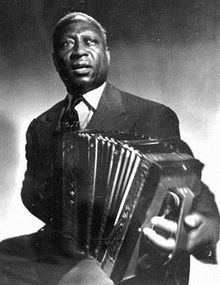 On this day in 1949, iconic folk and blues musician, King of the 12-String Guitar, Lead Belly, died in New York City at the age of 61. Born Huddie William Ledbetter in January 1888 on the Jeter Plantation near Mooringsport, Louisiana. He was incarcerated in 1918 for killing one of his relatives in a fight over a woman, and in 1930 for attempted homicide. Lead Belly’s vast songbook, much of which he adapted from previous sources, has provided material for numerous folk, country, pop and rock acts since his time including: The Beach Boys, Bob Dylan, Hank Williams, Jr., Creedence Clearwater Revival, Harry Belafonte, Van Morrison, Led Zeppelin, Nirvana, Kurt Cobain, Johnny Cash, Ram Jam, Tom Petty, Dr John, Ry Cooder, Odetta, Tom Waits, Rod Stewart, Ernest Tubb, The Doors, and Meat Loaf.
On this day in 1949, iconic folk and blues musician, King of the 12-String Guitar, Lead Belly, died in New York City at the age of 61. Born Huddie William Ledbetter in January 1888 on the Jeter Plantation near Mooringsport, Louisiana. He was incarcerated in 1918 for killing one of his relatives in a fight over a woman, and in 1930 for attempted homicide. Lead Belly’s vast songbook, much of which he adapted from previous sources, has provided material for numerous folk, country, pop and rock acts since his time including: The Beach Boys, Bob Dylan, Hank Williams, Jr., Creedence Clearwater Revival, Harry Belafonte, Van Morrison, Led Zeppelin, Nirvana, Kurt Cobain, Johnny Cash, Ram Jam, Tom Petty, Dr John, Ry Cooder, Odetta, Tom Waits, Rod Stewart, Ernest Tubb, The Doors, and Meat Loaf.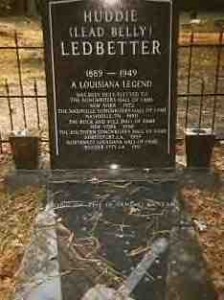
 On this day in 1983, French diseuse and singer Lucienne Boyer, died in Paris, aged 82. Perhaps best known for her song “Parlez-moi d’amour”. Born Émilienne-Henriette Boyer in Montparnasse, Paris on 18 August 1901.
On this day in 1983, French diseuse and singer Lucienne Boyer, died in Paris, aged 82. Perhaps best known for her song “Parlez-moi d’amour”. Born Émilienne-Henriette Boyer in Montparnasse, Paris on 18 August 1901.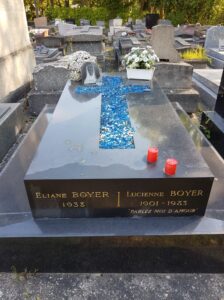
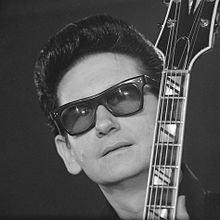
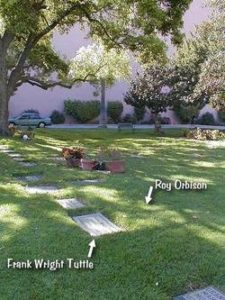
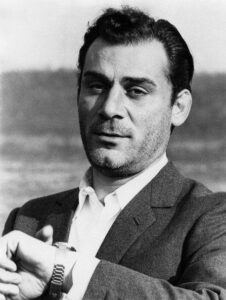
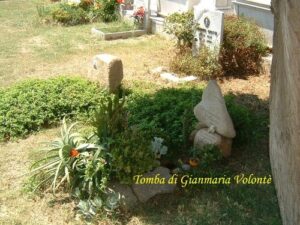
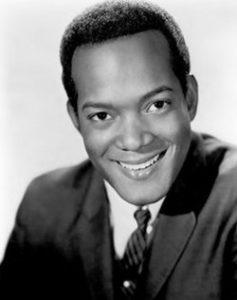
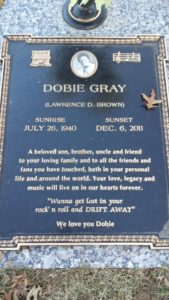
 And on this day in 2017, singer and actor Johnny Hallyday died from lung cancer in Marnes-la-Coquette, near Paris, at the age of 74. Born Jean-Philippe Léo Smet on 15 June 1943 in Paris.
And on this day in 2017, singer and actor Johnny Hallyday died from lung cancer in Marnes-la-Coquette, near Paris, at the age of 74. Born Jean-Philippe Léo Smet on 15 June 1943 in Paris.
 On this day in 1784, author considered the first African-American author of a published book of poetry, Phillis Wheatley Peters, died at the approximate age of 31 in Boston. Born in West Africa c. 1753, she was kidnapped and subsequently sold into enslavement at the age of seven or eight and transported to North America, where she was bought by the Wheatley family of Boston. After she learned to read and write, they encouraged her poetry when they saw her talent.
On this day in 1784, author considered the first African-American author of a published book of poetry, Phillis Wheatley Peters, died at the approximate age of 31 in Boston. Born in West Africa c. 1753, she was kidnapped and subsequently sold into enslavement at the age of seven or eight and transported to North America, where she was bought by the Wheatley family of Boston. After she learned to read and write, they encouraged her poetry when they saw her talent.


 The Final Footprint – Dumas was cremated and his cremains were originally interred at his birthplace of Villers-Cotterêts in the department of Aisne. In 2002 for the bicentennial of Dumas’ birth, the French President, Jacques Chirac, had a ceremony honouring the author by having his cremains inurned at the mausoleum of the Panthéon of Paris, where many French luminaries were buried. The proceedings were televised: the new coffin was draped in a blue velvet cloth and carried on a caisson flanked by four mounted Republican Guards costumed as the four Musketeers. It was transported through Paris to the Panthéon. In his speech, President Chirac said:
The Final Footprint – Dumas was cremated and his cremains were originally interred at his birthplace of Villers-Cotterêts in the department of Aisne. In 2002 for the bicentennial of Dumas’ birth, the French President, Jacques Chirac, had a ceremony honouring the author by having his cremains inurned at the mausoleum of the Panthéon of Paris, where many French luminaries were buried. The proceedings were televised: the new coffin was draped in a blue velvet cloth and carried on a caisson flanked by four mounted Republican Guards costumed as the four Musketeers. It was transported through Paris to the Panthéon. In his speech, President Chirac said:







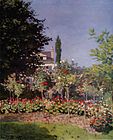






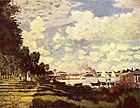






















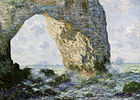




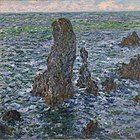











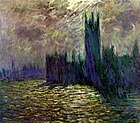

























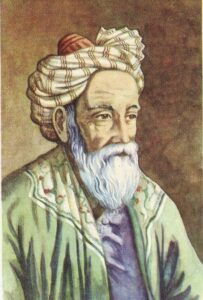 On this day in 1131 polymath, mathematician, astronomer, historian, philosopher, and poet Omar Khayyam died in his hometown of Nishapur, Persia (now Iran) aged 83. Born 18 May 1048 in Nishapur, the initial capital of the Seljuk Empire.
On this day in 1131 polymath, mathematician, astronomer, historian, philosopher, and poet Omar Khayyam died in his hometown of Nishapur, Persia (now Iran) aged 83. Born 18 May 1048 in Nishapur, the initial capital of the Seljuk Empire.
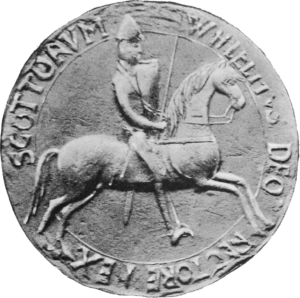

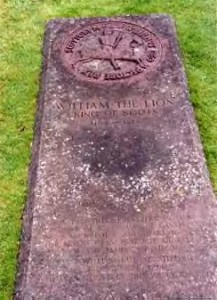 The Final Footprint – William was interred before the high altar in Arbroath Abbey in Arbroath, Scotland. The Abbey is cared for by Historic Scotland and is open to the public throughout the year. The distinctive red sandstone ruins stand at the top of the High Street in Arbroath. In My Defens, God Me Defend!
The Final Footprint – William was interred before the high altar in Arbroath Abbey in Arbroath, Scotland. The Abbey is cared for by Historic Scotland and is open to the public throughout the year. The distinctive red sandstone ruins stand at the top of the High Street in Arbroath. In My Defens, God Me Defend!
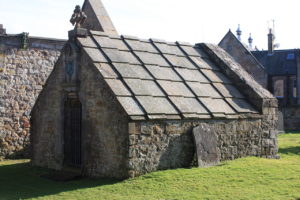 The Final Footprint – Drummond was buried in his parish church of Lasswade.
The Final Footprint – Drummond was buried in his parish church of Lasswade.